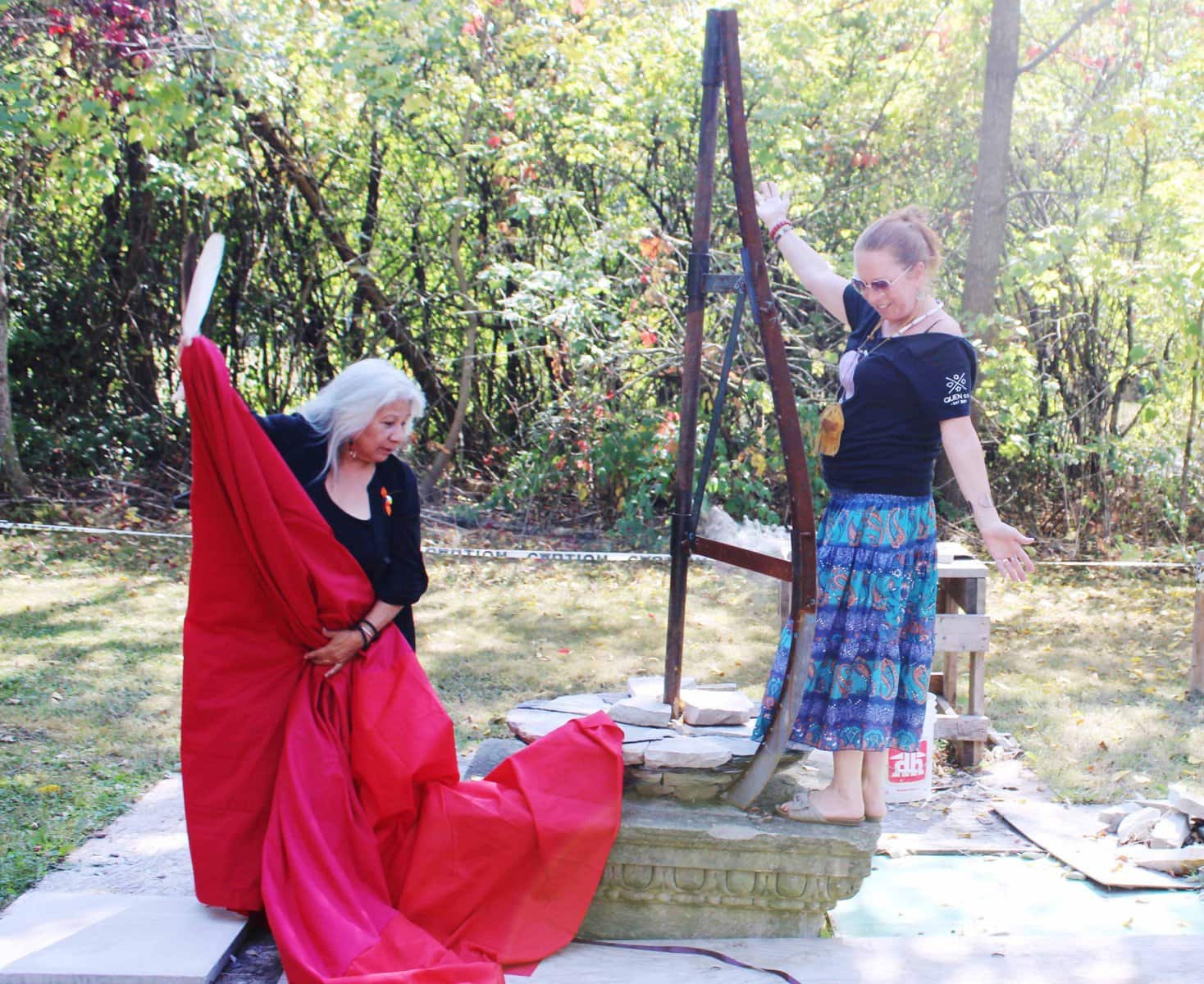Marie Bowering’s voice began to quiver as she spoke to a small group of people gathered at Willowbank.
They were listening to stories from Indigenous community members to mark Sisters in Spirit Day on Oct. 4, a day set aside annually to remember and raise awareness of the epidemic of missing and murdered Indigenous women and girls in Canada.
Bowering recalled what happened to her grandmother, who was sent to a residential school, which she likened to a prison.
“Part of the reason why Sisters in Spirit is such an emotional day for me, and for our community is that my grandmother, Maggie, was in those prisons, as well as some of my family,” Bowering said.
Her other grandmother, Elizabeth, however, had a more cruel fate in store.
“She was murdered: we should remember that. She was raped and left for dead.”
Because of what happened to her grandmothers, Bowering said she always wants to honour them, along with her other “sisters in spirit.”
She, too, was a victim and referred to herself as a “walking miracle” and was fortunate to survive an act of violence in 1994.
“I, too, was beaten and left for dead. When that happened to me, it was almost like I walked the same path as (Elizabeth),” Bowering said.
Having a place like the Love Garden at Willowbank in Queenston, along with a new cairn (a marker made of stones) being constructed on-site, is healing, she said.
And lot of thanks goes to Julian Smith, Bowering said. He was director of the school back in 2013 when the idea for the garden first came about.
“He was open to the idea of our Indigenous community coming to Willowbank to have a garden and it was one of the most magnificent, joyful times in our community,” Bowering said.
The journey for the Indigenous community is not being made alone, she said.
“We have what I like to call invisible partnerships: we have MOUs (memorandums of understanding) with no writing,” she said.
And now, the teardrop-shaped cairn to honour missing and murdered Indigenous women and girls.
“They want to do these cairns all over Turtle Island,” said Natalie Blueraven, an Indigenous woman who has been volunteering at the Love Garden since its inception.
(In Indigenous culture, Turtle Island refers to North and South America.)
“In other countries they are a landmark where you come to put down your prayers and do ceremonies.”
After the project was unveiled, Jackie Labonte, a traditional Mohawk teacher, said the unfinished cairn’s stones are symbolic.
“Every piece here has a place,” she said. “To the largest ones, to the smallest ones. The same as us.”
While some voices may be louder than others, “we all have a place in the circle,” she added.
Bowering, meanwhile, said the journey toward reconciliation isn’t being made alone.
Bridges have been built between Indigenous and non-Indigenous partners. Some of those partnerships include the Niagara Catholic District School Board through the Soaring Eagles schools, Niagara College, Brock University and the Niagara Regional Native Centre.
“We’re literally walking the Two Row Wampum that was created many, many, years ago,” Bowering said.












